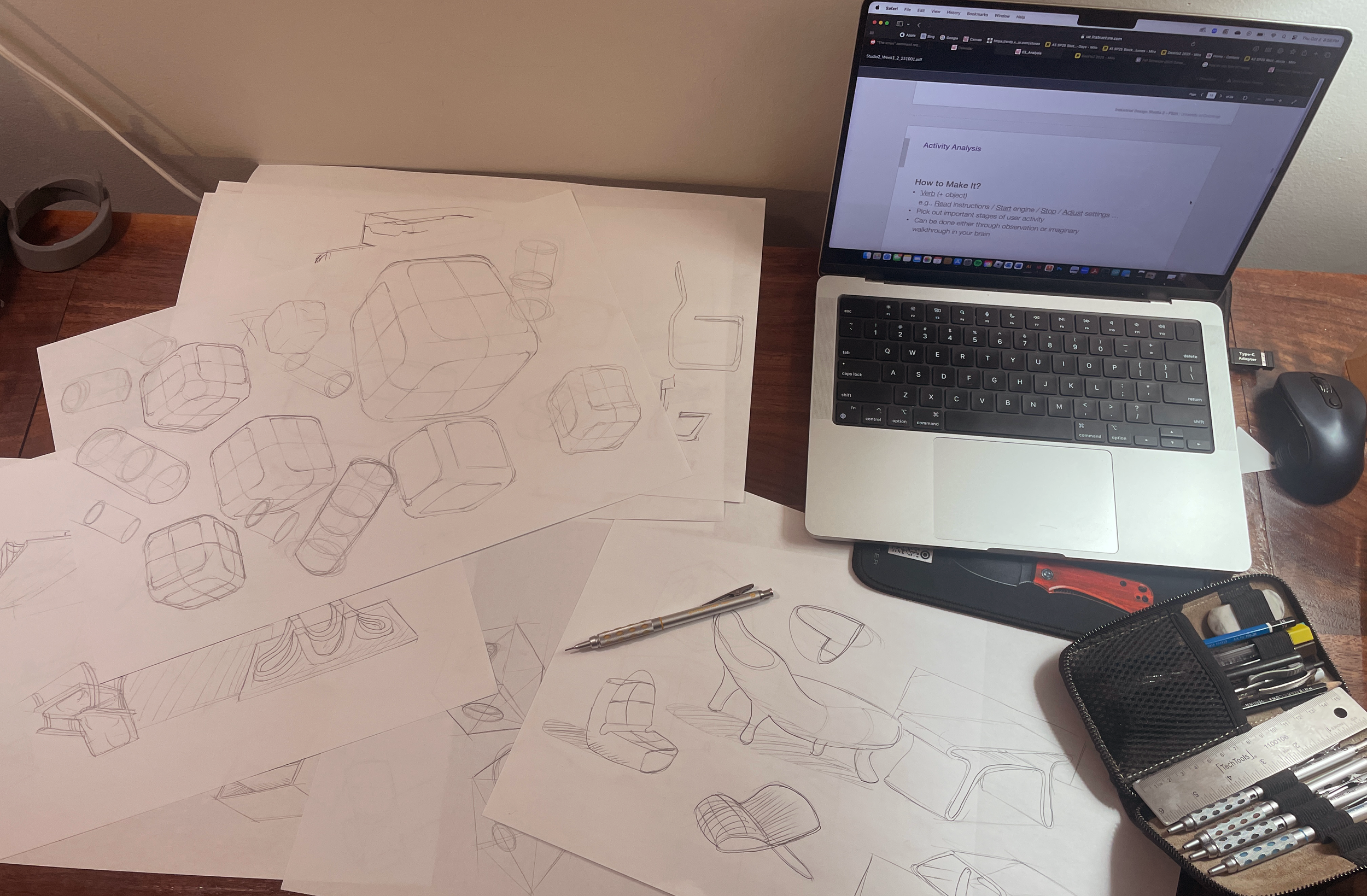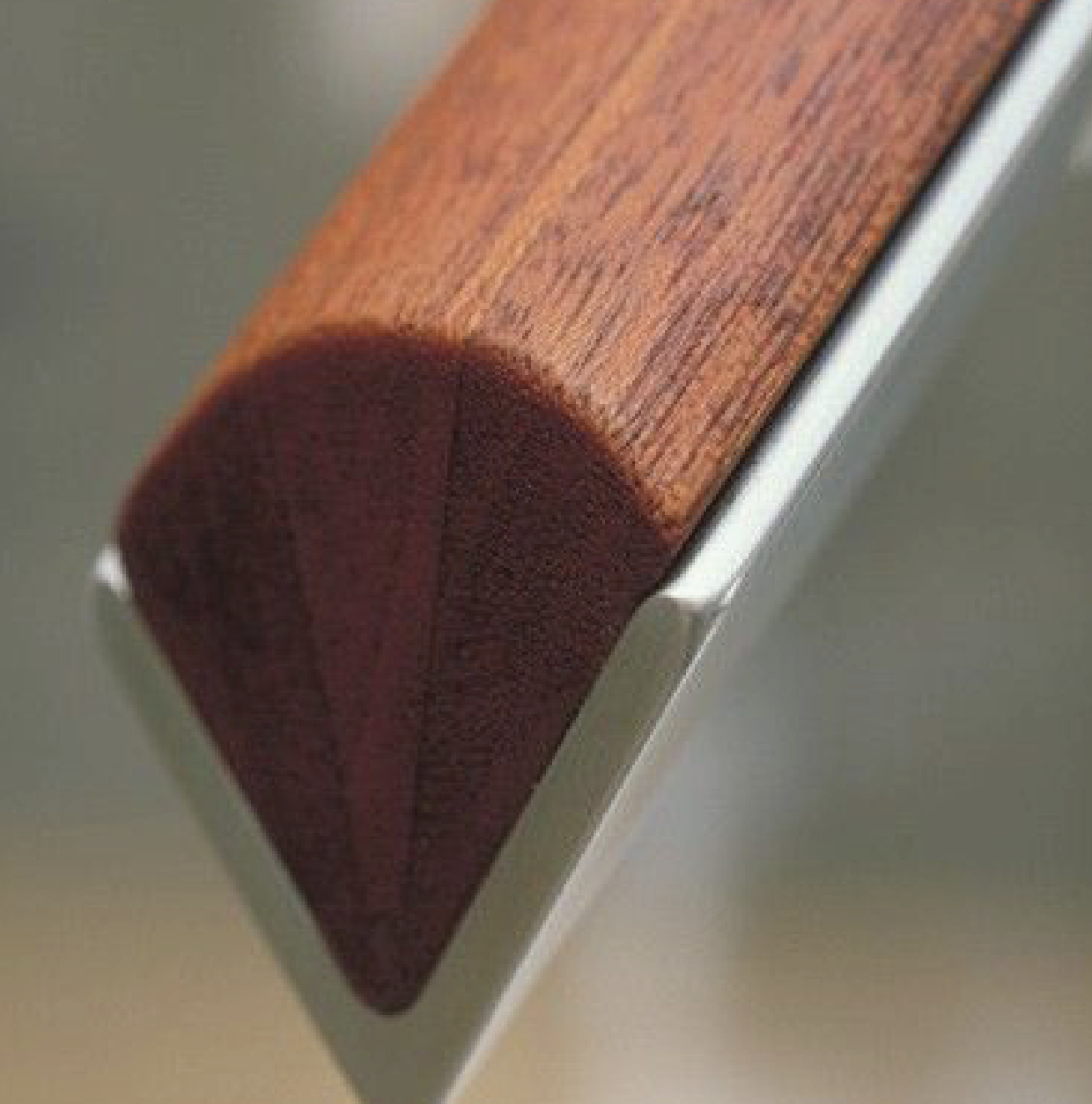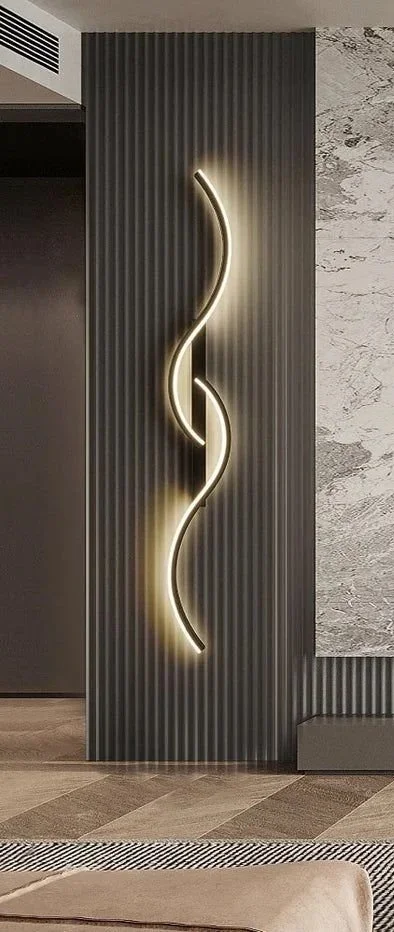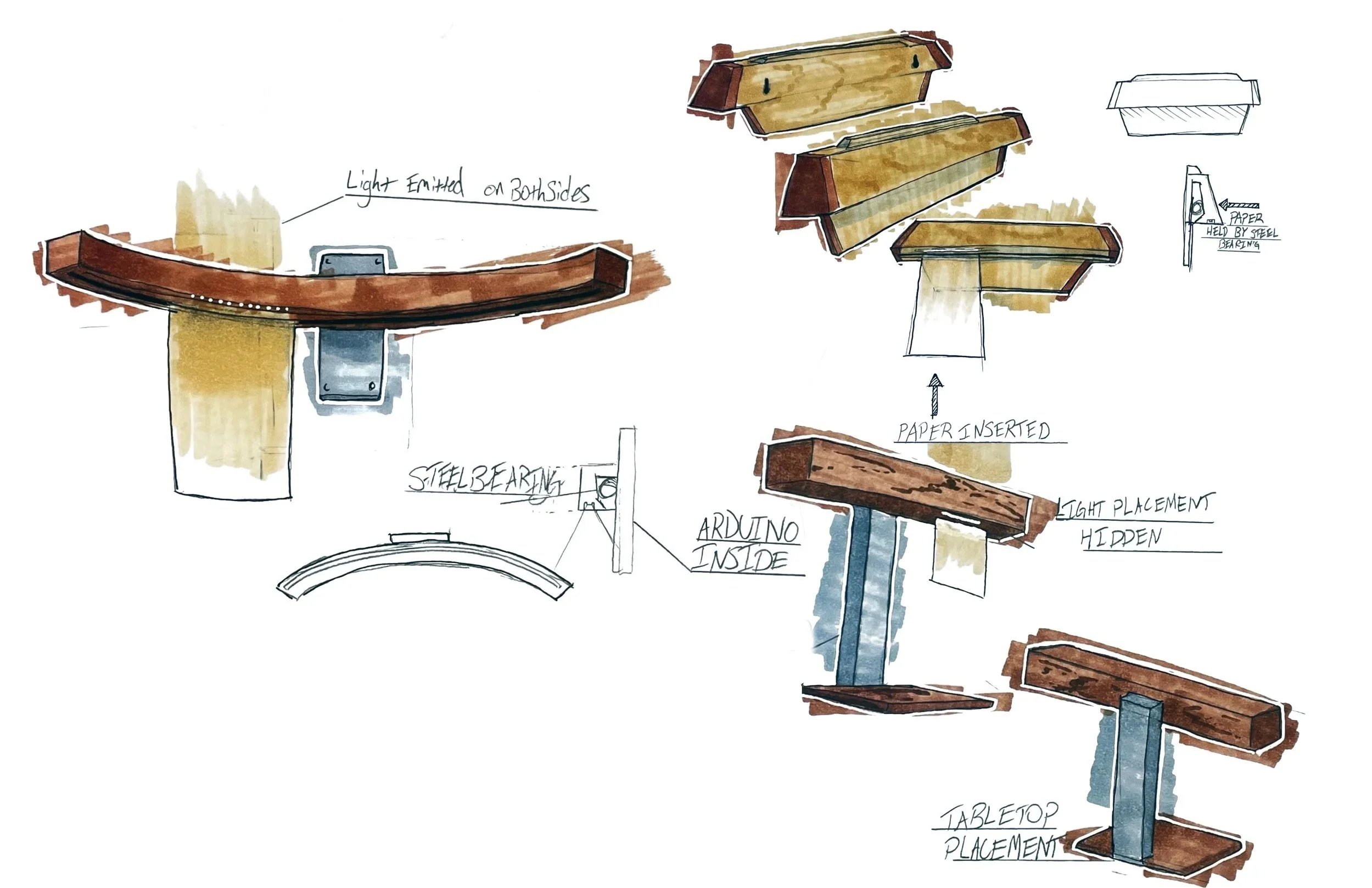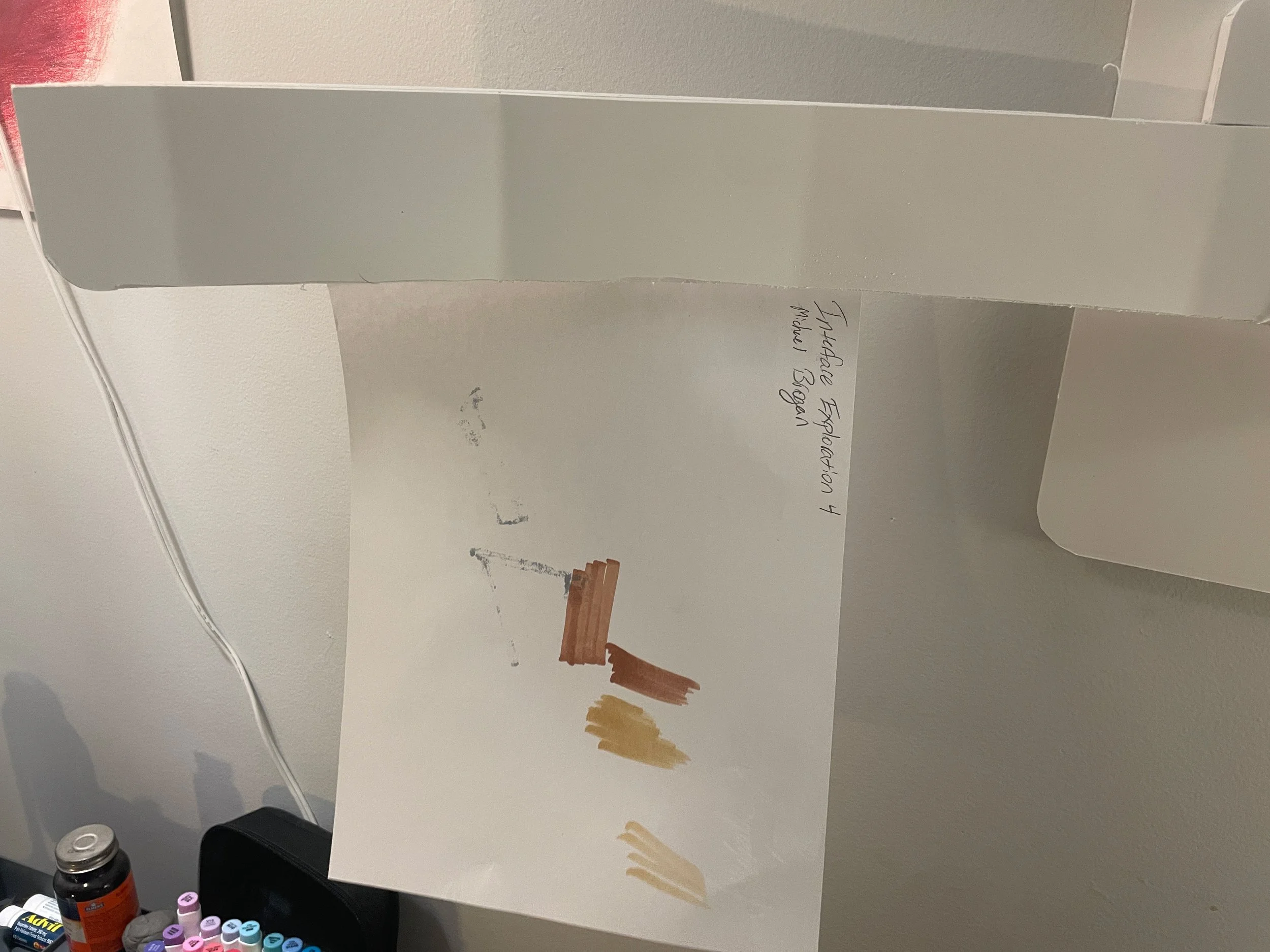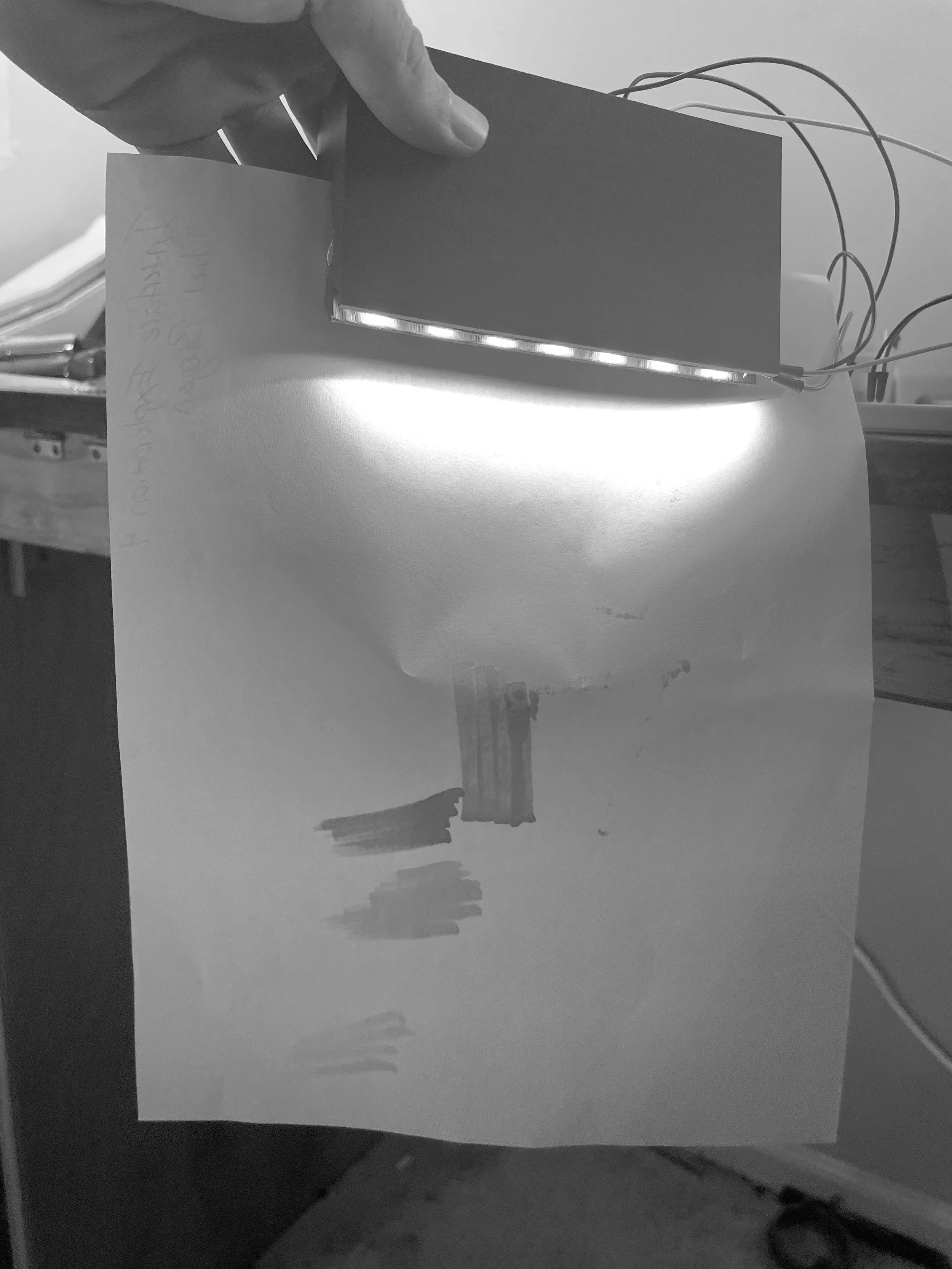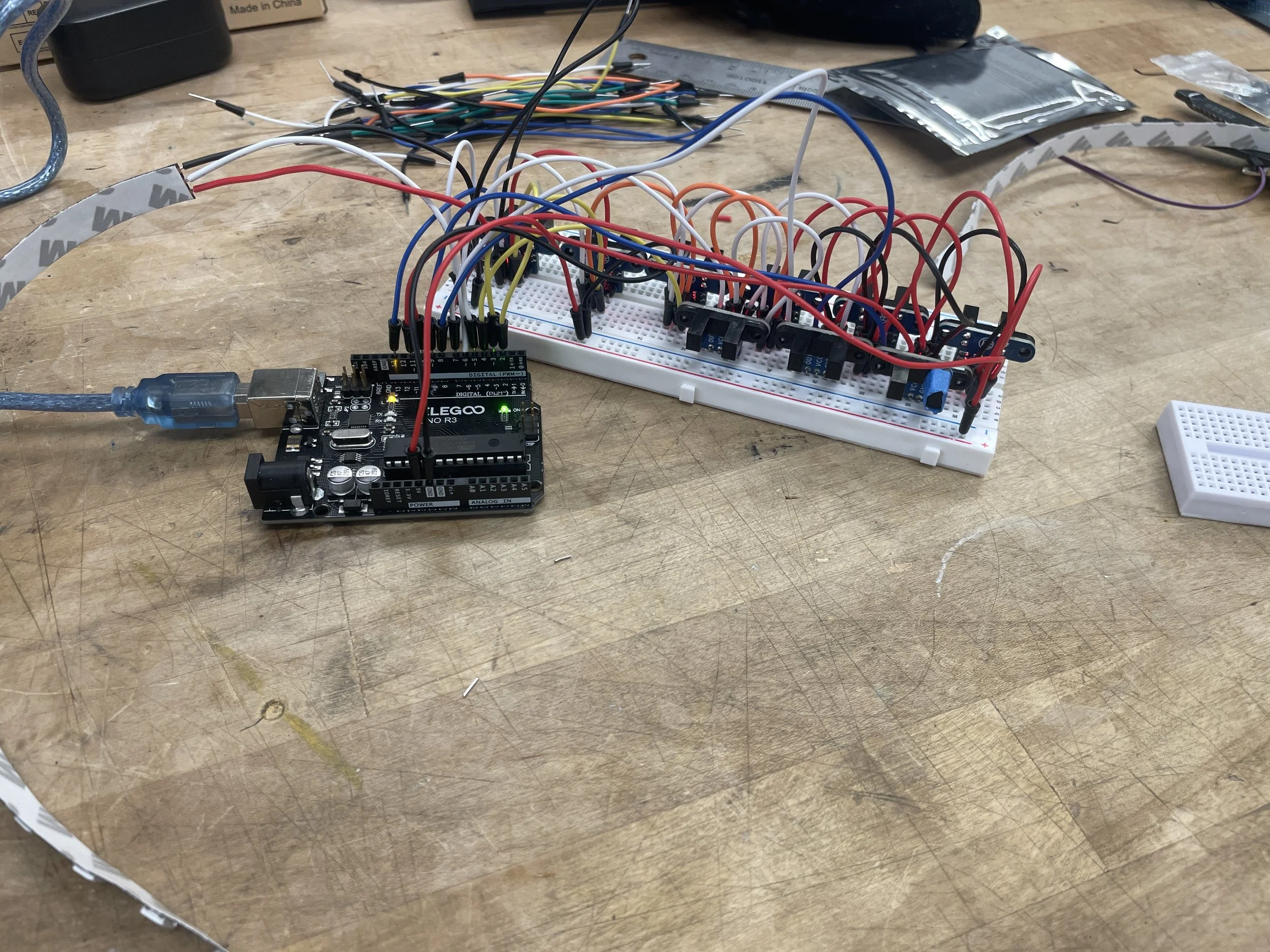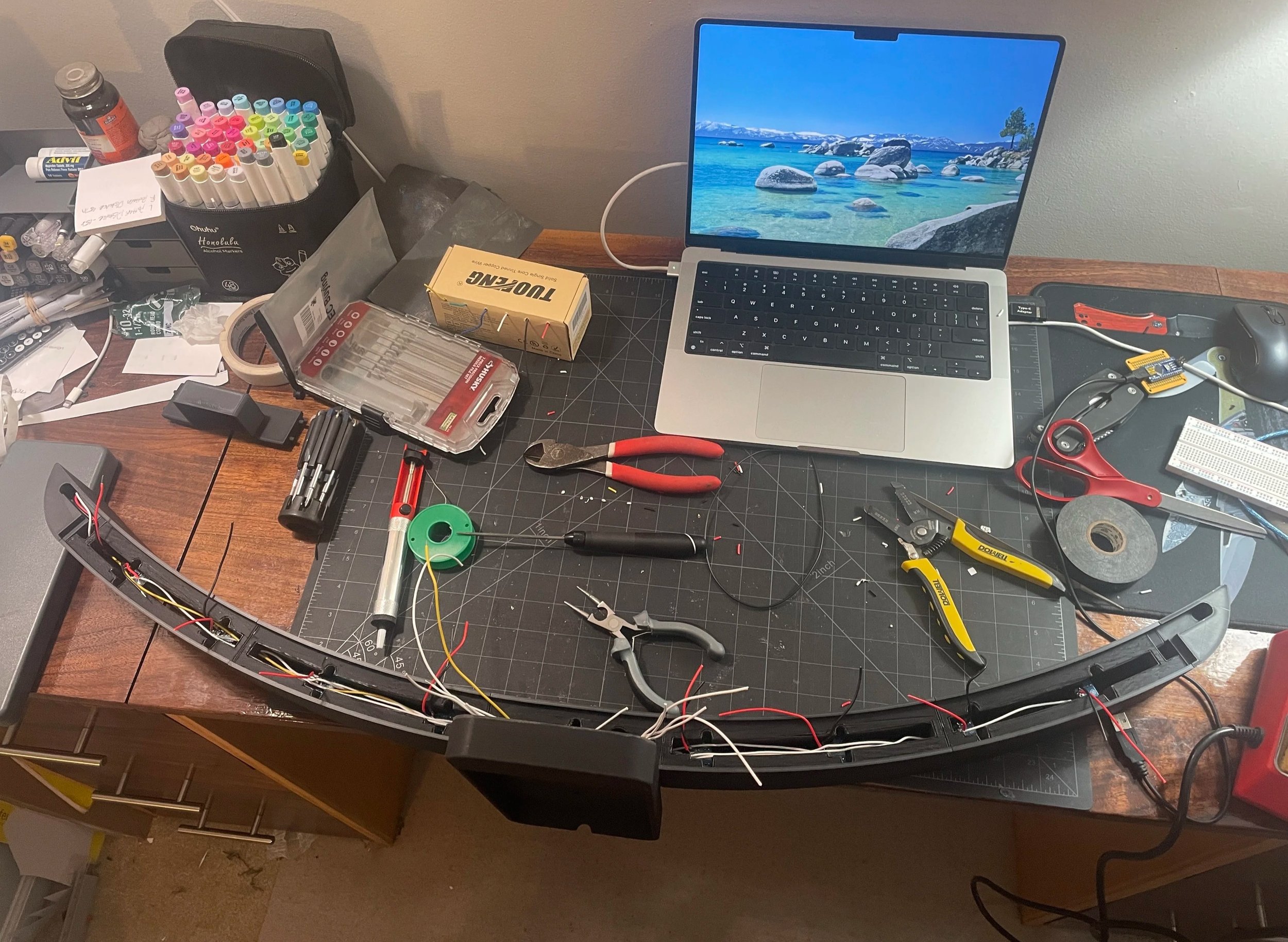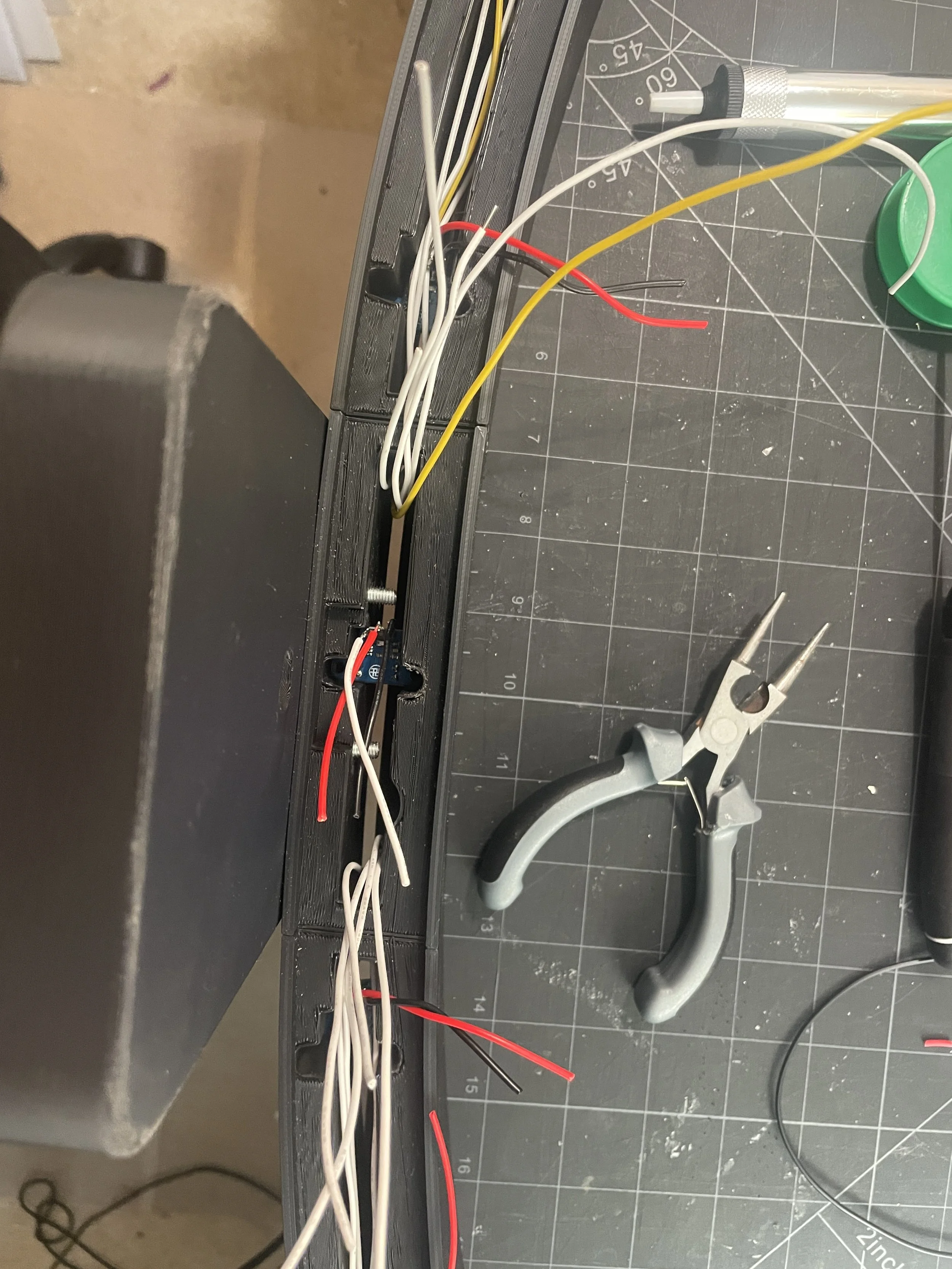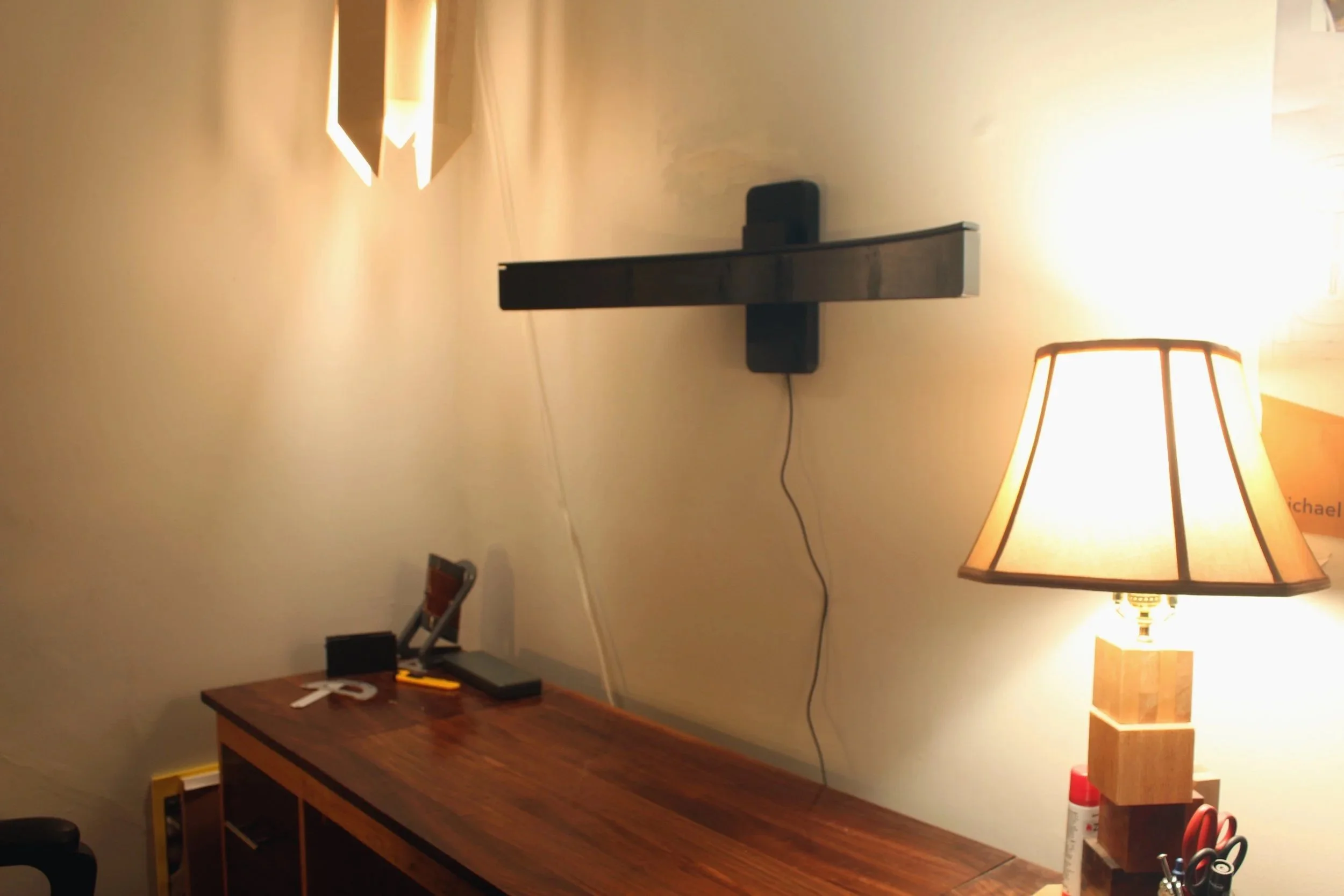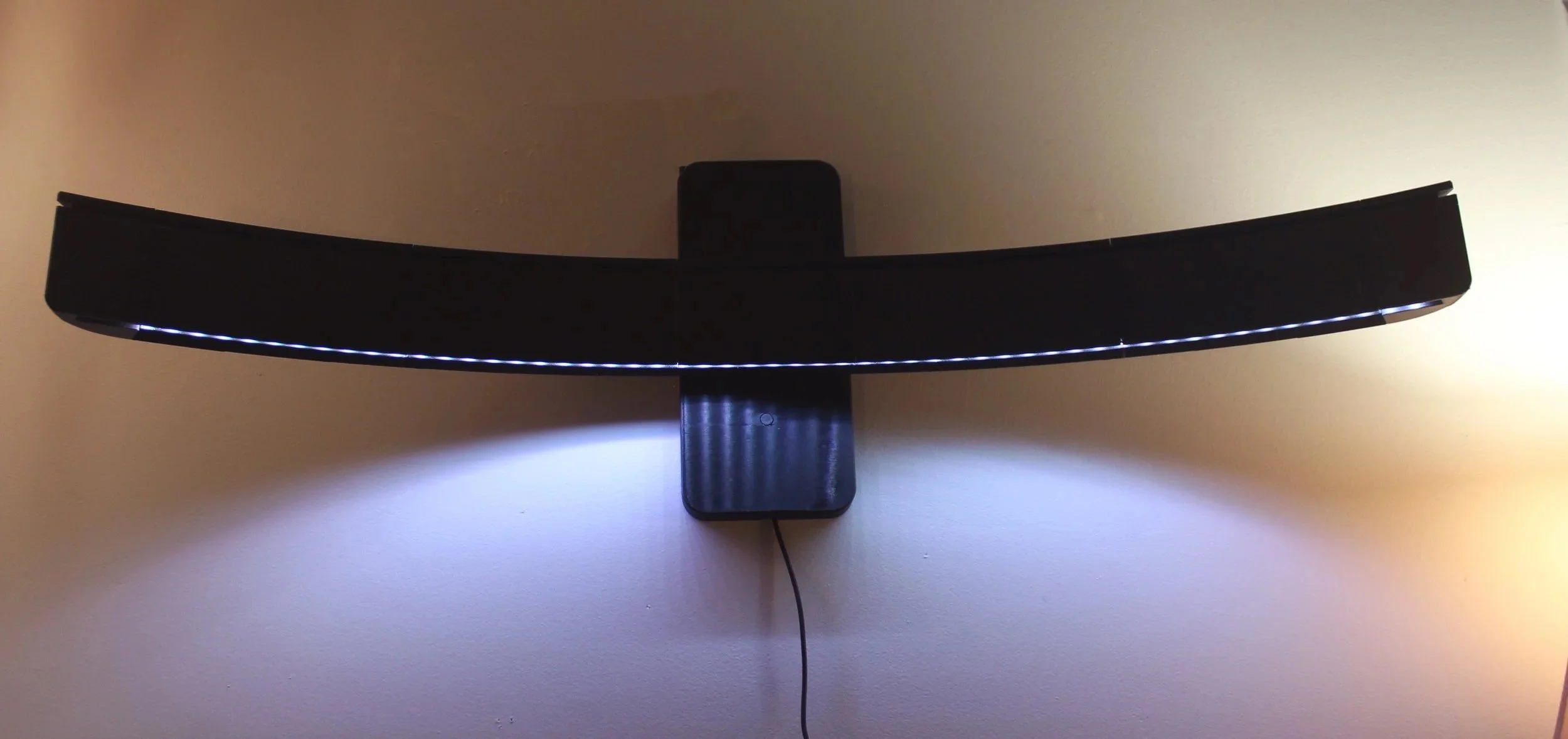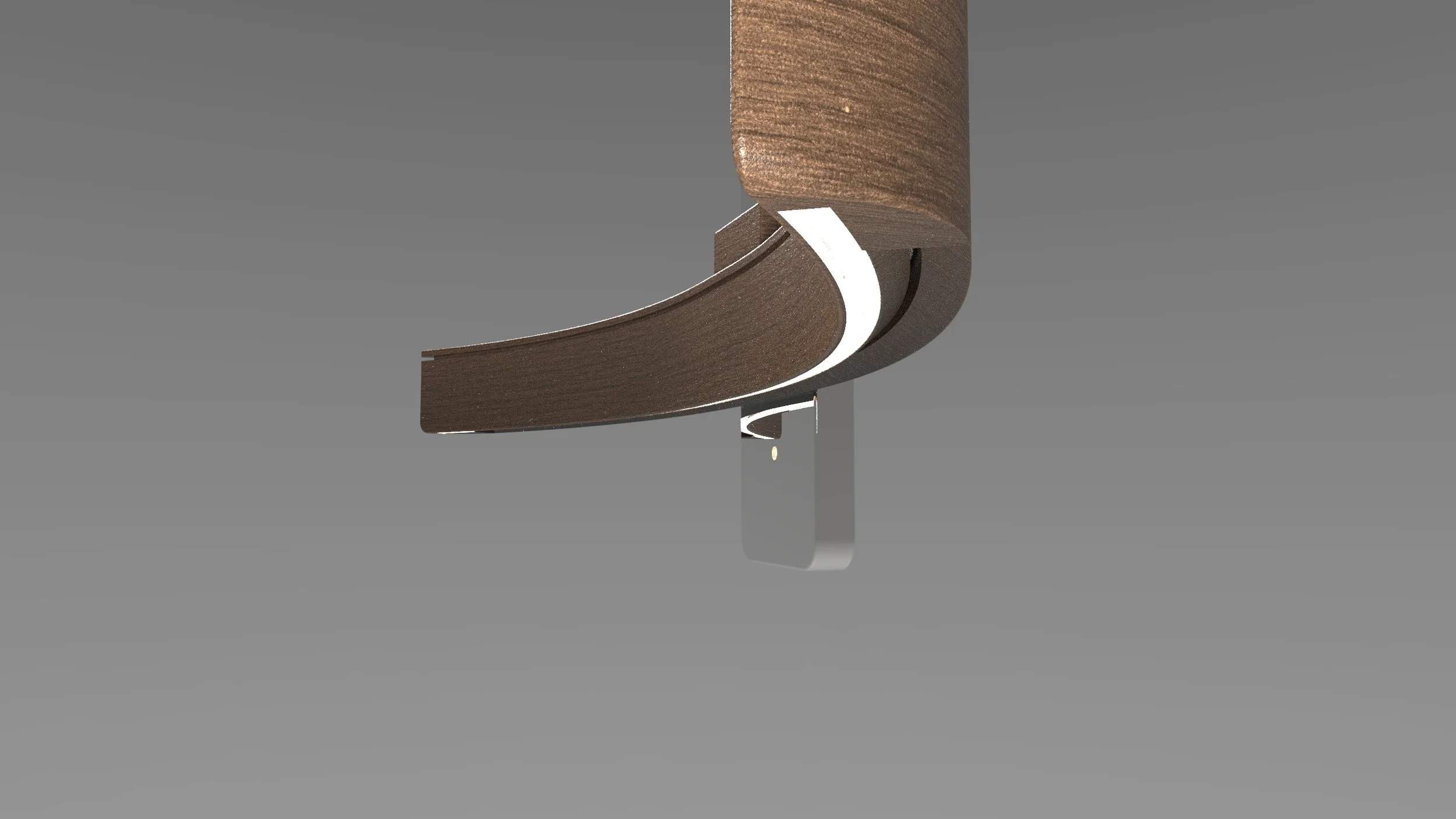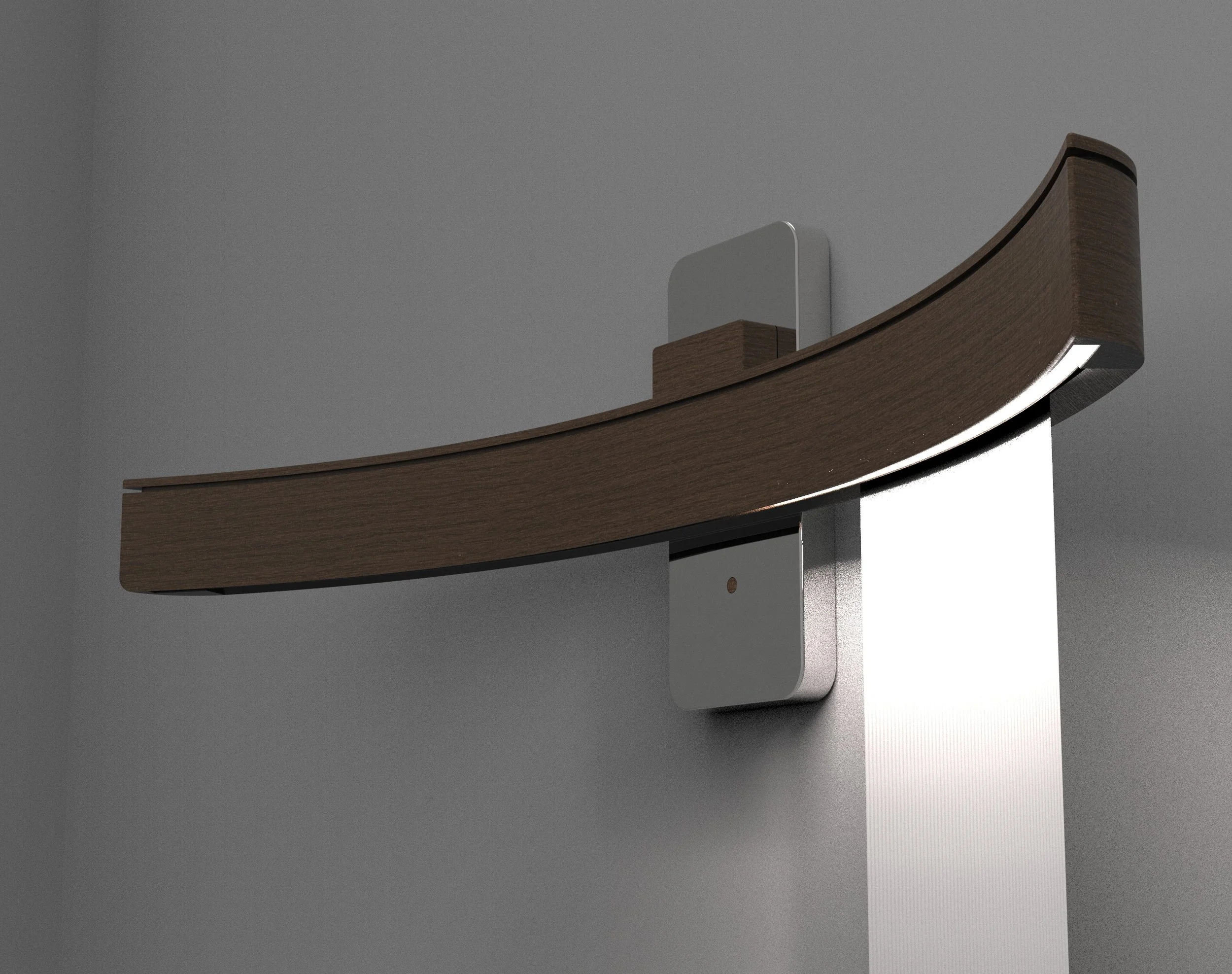
Paper Light
Duration
5 Weeks
Date
Fall 25’
Exploration in Integration and Form
The goal of this project is to solve the problem of cluttered desks. Design a product that solves this problem by keeping papers off the desk, and creating a sleek modern form that enhances the desk environment.
Skills used: Design Visualization, Integration, Human Intractability, Fusion 360, Prototyping, Coding, Keyshot
Organizing your Desk Space
The desk is a set place that gets messy after hours of work. Clutter often becomes an unnecessary stressor in our everyday lives. Designing a solution to this can minimize this stressor greatly.
Current Task Analysis - Homework
The problem that many students have, especially in the creative fields is keeping their desks clear while working. The diagram shown above shows where the pain point comes forward in the task. This can also be translated into other tasks that are done at the desk.
Human Machine Flow Diagram
The ability to integrate machines, or technology into a product is essential in a modern age. This flow diagram shows how the product functions; what the person does and what the machine does.
Inspiration
For inspiration I focused on simple-sleek designs that could incorporate a user friendly design, that allows the user to interact with it. The simple side of these designs would allow me to focus on that user centered design.
Early concept Sketches
These sketches were the driving force behind the final design of this project. These allowed me to explore the form of this idea. Using the inspiration from the ideas before, I followed the idea of having multi-material designs with simple sleek forms.
User Interaction Sketches
These fast drawn sketches allowed me to see how the user would be able to change the design by using the product. These would further the design of the product by allowing for more possibilities such as light placement, placement of the product itself, and where and how the user would interact with it.
Development Sketches
These final sketches would lead to choosing the final design. These give an idea of the inside of the product, how it functions mechanical, and electronically.
Early Model
This model was mainly to determine size, and proportion. This would then allow me to make a CAD model that would then further into a fully made, fully functioning 3d printed model.
Coding and Early Working Prototypes
These models are used to show how the code works and to plan to integrate properly. This model features 9 IR break beam sensors, as well as a button that are all wired to a Arduino Nano that runs
Prototype Production Process
The process involved in making the final prototype involved around 12 hours of 3d printing, including several test prints to make sure pieces fit together, Glueing the 14 parts of the main body together, installing the backing, installing the mount, and finally installing all the wiring to each sensor and the light strip. Each sensor has three pins, one for power, one for ground, and one to the designated spot on the Arduino Nano.
Working Prototype
This prototype uses 3d printing and coding to achieve the goals set in this project, to solve the problem of messy, unorganized desks. This achieves it by giving a reason to store paper in the holder, it lights your work up. Problems shown in this model are fixed by the final model. Problems such as joints breaking, are not present in the final product as these are simply limitations of 3d printing such a large model. Using my newly attained knowledge with arduinos, C++ and some help from Chat GTP I was able to properly code this functioning prototype.
Exploded View
This design features a main wooded, stack laminate body that curves to better show work when seated at a desk, housing 9 IR break beam sensors, an Arduino Nano for control, and 55 steel ball bearings to firmly hold the paper. In addition, a metal bracket that houses the button to turn on and off the lights, a French cleat to mount it to a wall, and serves as the main mount to the body.
Take Away
The process of making this product was a new experience. I had no previous knowledge of how to code, but I wanted to learn. This project alone has opened my eyes into new possibilities in design. Being able to interact with a product in a new way, that is often unexpected is a wonderful feature to have.
